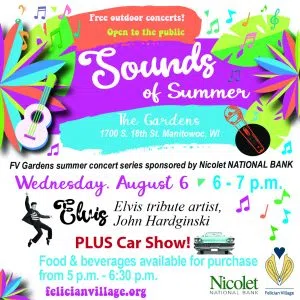The following article was submitted by Rahr-West Art Museum Staff, Board Members, and Public Arts Committee Members.
In honor of a new year, Museum Staff, the Public Arts Committee and Rahr-West Art Museum Board members curated art pairings with food and drinks as a suggestion for New Year’s celebrations. These pairings, centered on art from the Rahr-West Art Museum’s permanent collection, aim to find harmony between the senses, combining taste with visuals for a unique experience.
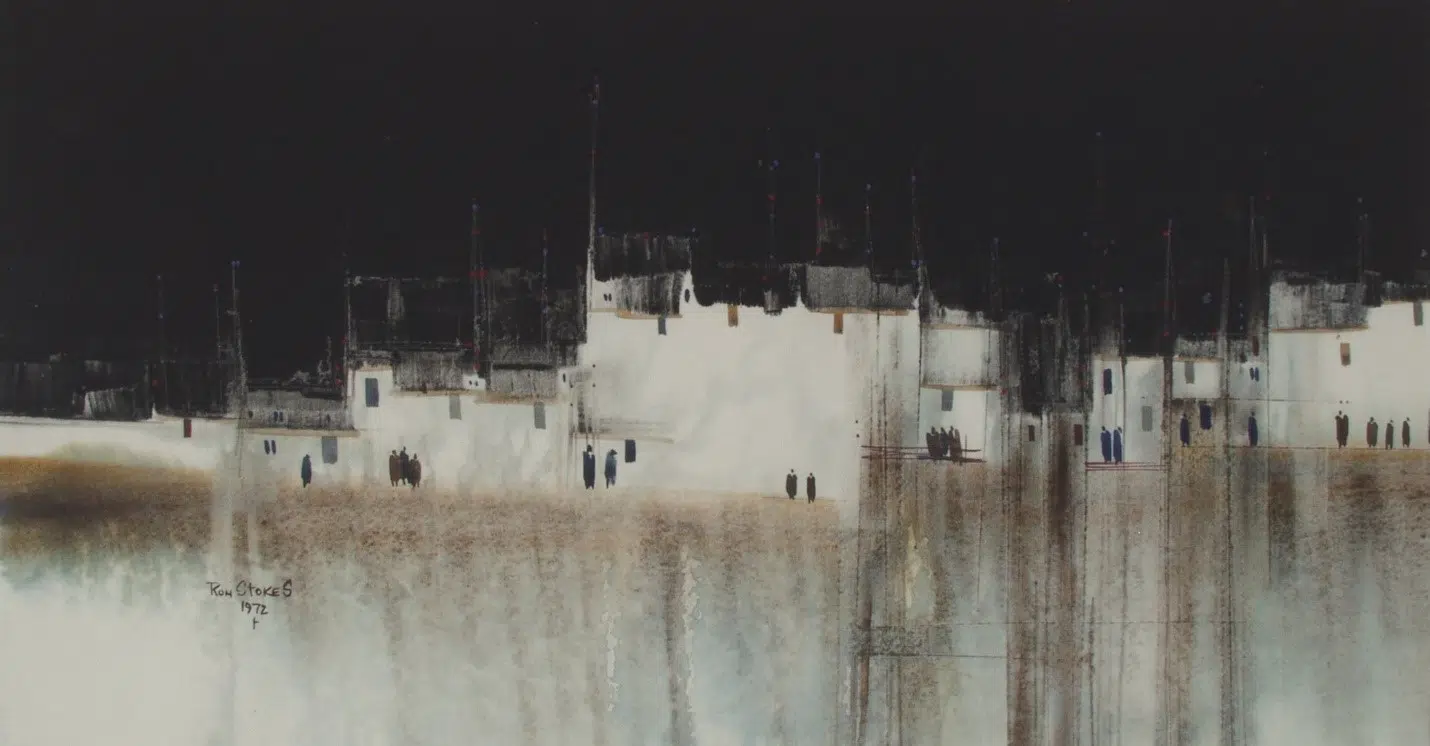
Cassie LaPean: Ron Stokes’ “Untitled” and a Dark and Stormy
Ron Stokes “Untitled”, is one of many early skyline abstractions where the artist featured buildings, boats, or landscapes. In this particular watercolor, the ambiguous ivory walls stand in stark contrast against the pitch-black horizon. The true location is obscured by this dark and vast emptiness. However, on closer inspection the vertical streaking of alabaster and amber hint at oxidization of a vessel at sea. Indeed, the artist’s use of his own monogram appears to double as the vessel’s anchor.
To observe and pay tribute to Stokes’ early abstract style – a cocktail that compliments both the gradation and ambiance of the work–try the Dark and Stormy. Origins of the cocktail date back to World War I and have roots as the unofficial drink of the naval community. To mimic the harmonious dark and amber watercolor with an authentic flair, pour 6 oz. of Gosling’s Stormy Ginger Beer and float 2 oz. of Gosling’s Black Seal Rum over ice. Garnish with a spritz of lime and allow yourself time to truly appreciate the striking similarities in both color and origin.
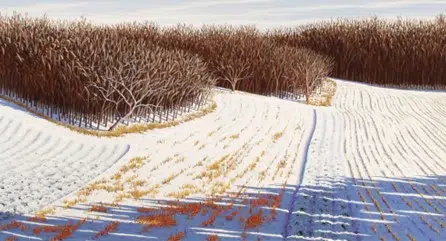
Sandy Egbert: Roger Laux Nelson’s “Frozen Land” and Hot Cocoa
Roger Laux Nelson is an American Postwar & Contemporary artist, born in 1945, who grew up in Minnesota. He has painted these same woods and fields in every season.
The painting seems a bit cold and lonely when you first look at it but it reminds me of my childhood winter adventures in the fields and woods that surrounded my childhood home in Manitowoc County. The Manitowoc River ran through those woods; it was the perfect spot for ice skating. We’d use a fallen tree as our bench to change from our winter boots to our ice skates. As children, my siblings and I would enjoy the winter woods and sledding on the hilly fields. After we returned home with cold and frozen feet, our mother would have hot chocolate waiting for us.
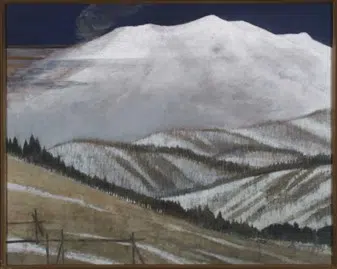
Carrie Estrella: Katsuma Kawai’s “Ontake” and Sho-gatsu
Snow devils playfully curl around the summit of Ontake – was the snow kicked up by a group of downhill skiers or are those actually whisps of smoke we see? At just over 10,000 feet tall, Mt. Ontake is Japan’s second highest volcano; an active volcano thatlast erupted in 2014. Considered to be one of Japan’s most sacred mountains, the volcano is dotted with hiking trails leading to shrines and beautiful waterfalls, as well as two ski resorts. The food eaten around the New Year, termed sho-gatsu, is quite particular and based on more than 1000 years of tradition!
If this picture captures the view out of my kitchen window on New Year’s Eve in Japan, what would I be preparing for my family?
- Toshi-koshi soba is typically eaten on December 31st, a food that has come to symbolize crossing over into the new year. The length of the buckwheat soba noodle is said to represent a long life. It is considered bad luck to leave any noodles behind.
- Kagami mochi (squishy rice cake) is another common New Year’s delicacy. The name of this food roughly translates to ‘mirror mochi’ – a name that is illustrated by a large circular mochi underneath a smaller mochi. The two mochi are believed to represent yin and yang, or the heart and its strength, for the coming year. Most families will eat the mochi by breaking it apart and putting it into ozoni
- Osechi-ryouri is the name for the traditional Japanese New Year food found in special multi-tiered lacquer boxes. The food stored in these boxes are prepared with the intent of being kept for a few days and eaten cold, with no additional cooking required. Common foods include boiled root vegetables and legumes, candied nuts, dried fish, cooked/chilled shellfish or octopus, and herring roe. This tradition respects the first three days of New Year as a time for rest, keeping food preparation and cooking to a minimum.
Japan welcomes in the New Year 14 hours before Manitowoc, Wisconsin – Akemashite omedetou gozaimasu! Happy New Year!
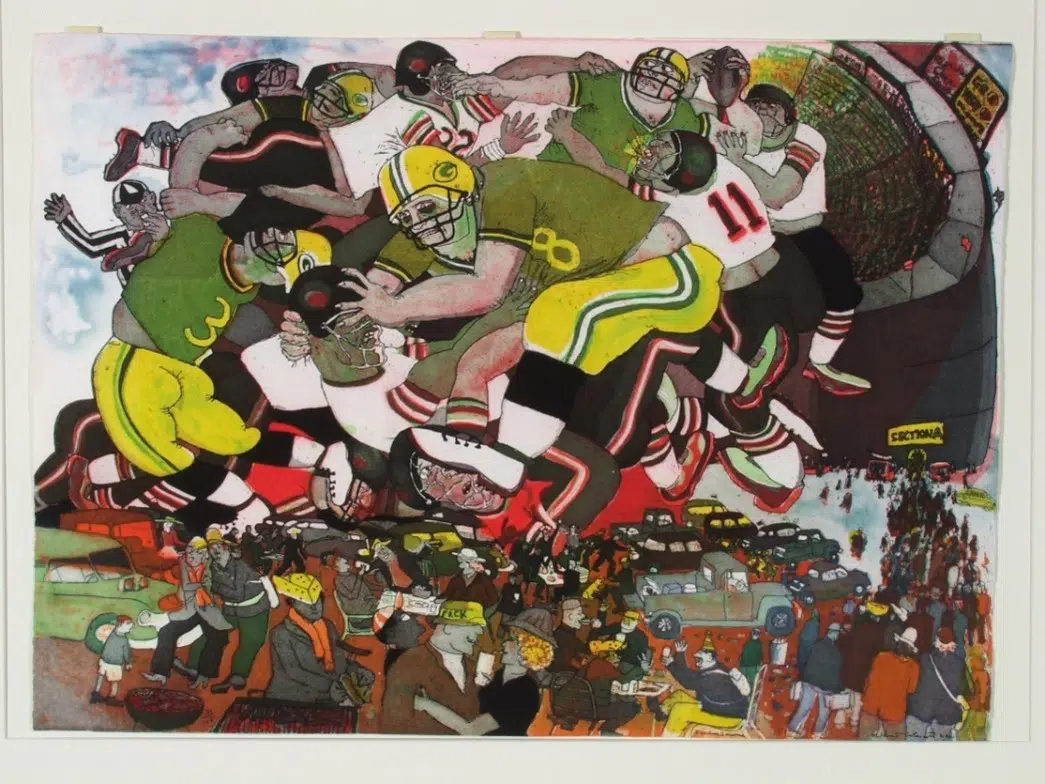
Courtney Hansen: Warrington Colescott’s “Sunday Service” and Sheet Pan Nachos
While it might not have been the football season Packers fans were hoping for this year, I’ll be spending both Christmas and New Year’s Day cheering on the green and gold with family and praying for a W. Like those tailgating in Warrington Colescott’s Sunday Service, I believe it isn’t a true Wisconsin game day without a delicious menu of both bites and sips. For these Sunday holiday games, I’ll be serving up a mix of warm chili, sheet pan nachos, and chicken wings to feed a crowd of fans. Of course, football pairs well with cold beer, no matter the temperatures. I think a River Point Copper Ale from PetSkull Brewing is the perfect brew to toast to a win!
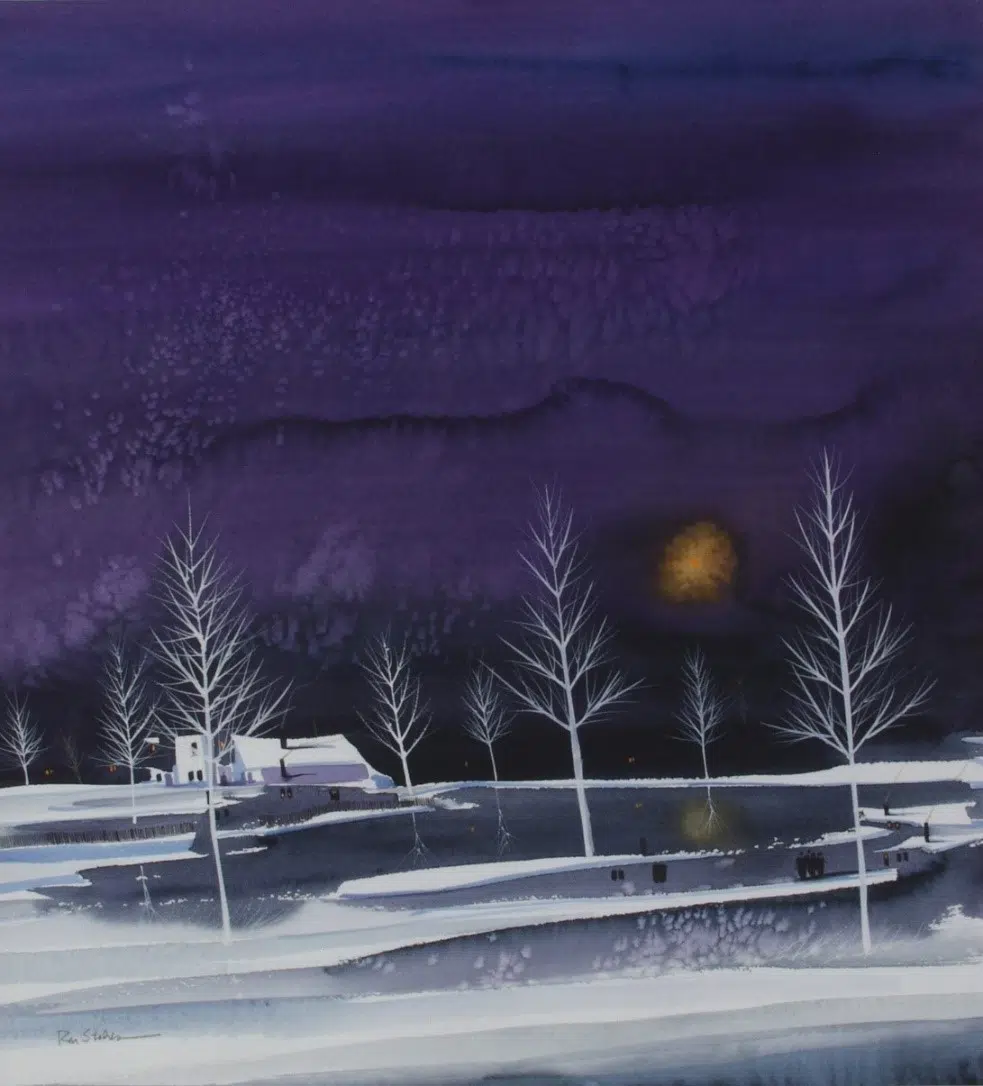
Dolly Stokes: Ron Stokes’ “Birch Stand” and Spiked Cider
Lost Lake is covered with ice and snow – the birch trees are beautiful – white against white. Our old log cabin is toasty warm with that wonderful UpNorth smell of brush from our woods burning and crackling brightly, in our ancient wood burner.
An old, chipped enamel coffee pot filled with cider sits on the top of the wood burner, sharing the fire.
The hot cider smells wonderful – but it tastes even more wonderful when we add a goodly port in of brandy and Jameson to our cups.
Gas lights, candles (no electricity), wood heat, family and friends to share memories with – and a bit of cheer to warm our insides – We are loving our cozy world!

Diana Bolander: Mark Tobey’s “Clarte” and Herbal Tea
Early Abstract Expressionist Mark Tobey addressed big ideas in his work, including: mankind, nature, God, unity, and equilibrium. He is famous for his white writing paintings that cover the entire surface of an abstract field of color with thousands of brushstrokes or marks. This obsessive, repetitive mark-making, with connections to both Asian calligraphy and surrealist “automatic-writing” techniques, can be seen as a type of meditation. Whenever I encounter a Mark Tobey work, it never fails to make me stop whatever I am doing or talking about to trace the lines with my eyes and imagine the paths his hand made while working. I personally find his work soothing, not unlike a cup of hot herbal tea at the end of a cold winter day. I invite you to serve yourself a steaming cup of licorice root or lavender chamomile tea and let your mind wander as you explore this print. It’s sure to warm your cockles and your soul.








